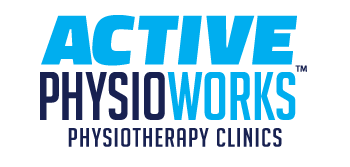The Runner's Foe: Illiotibial Band Syndrome
Jun 05, 2015
Over the past three months a number of friends and I have been training for the Fallen Four Marathon from Mayerthorpe to Whitecourt Alberta, including my co-worker Bobby McGugan. Although we are physiotherapist's, we too, can not avoid the problems associated with overuse syndromes. For this reason I will outline some of my tips for dealing with lateral knee pain, also known as IT band syndrome.
What is IT Band Syndrome?
IT band syndrome is an umbrella term describing lateral knee pain (pain on the outside of the knee). Although it is not truly understood exactly what tissue may be irritated or inflamed, we do know how it is caused and some simple small adjustments to make in order to help prevent its progression or existence. Because treatment/prevention is as simple as looking at the cause, it will be better to address these topics together.
Why does it happen and how can we treat it?
The largest contributor to lateral knee pain is OVERUSE/REPETITION and this is not exclusive to mileage. Below is a list of the repetitive issues and their remedies.
1) Mileage: Both distance and frequency of running contribute to overuse. An easy way to ensure you are not overtraining is to develop a training program specific and relevant to your race or leisure plan. Although the body dislikes being overstressed too fast, it also requires that stress (gradually) in order to progress and build its' tolerance to activity.
2) Surface: We know you all have your favourite routes, but a strategic change in your weekly course plans will make a huge difference. Running on the same side of a sloped road, on concrete and in the same direction 5 days a week creates not only specific stresses on your knees but also a learned imbalance. Un-learning and re-learning a new gait pattern once your knees get sore is a lengthy process. So plan your routes accordingly!
3) Activity type: Long slow distance runs are important but can effect your knees largely. It is very important to focus on creating variety in your training program. Variety will allow less repetitive stress from long runs and new muscle recruitment to give your overusers a break. This can be adjusted by training hills, stairs, tempo or cross training.
Now that we have discussed specific training flaws here is a look at a few more ideas that will help you prevent lateral knee pain.
1) Strength and muscle balance: gluteal strength and key muscle lengthening will create optimal mechanics for your lateral knee. Talk to your physical therapist about getting an assessment to outline your current strength and weaknesses.
2) Stride length and cadence: Lengthening your stride can help lengthen your hip flexors which have a direct effect on your IT Band. But do not sacrifice good cadence for a longer stride length.
3) Footwear: seek a health care professional to determine a shoe that will work for you.
Lastly it is important to talk about some anatomical issues that may or may not contribute to lateral knee pain.
- Leg length discrepancies may causes asymmetrical loading of tissues which can lead to pain over time.
- Genu Varum (bowed legs) increases the stress along the lateral knee and can also lead to pain
For help with these simple adjustments drop by one of our clinics today where our therapists will be happy to get you the help you need. To book an appointment call 780-458-8505.
Also check out Bobby McGugan's blog on knee pain to help differentiate where your pain may be coming from.
Please add your bio info through your member profile page, or through your dashboard.

